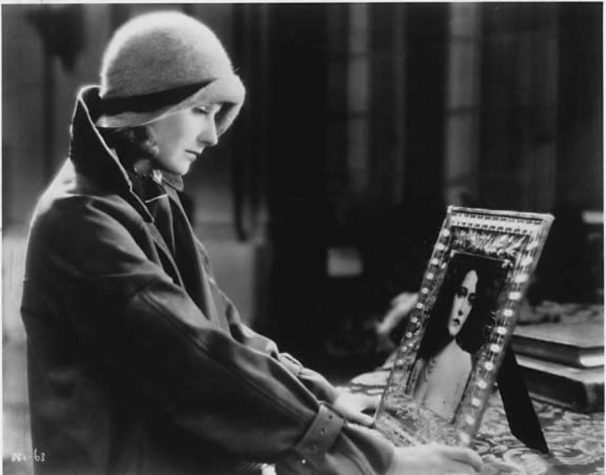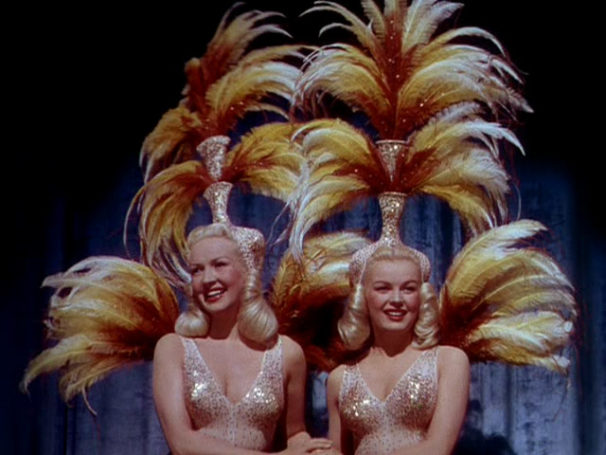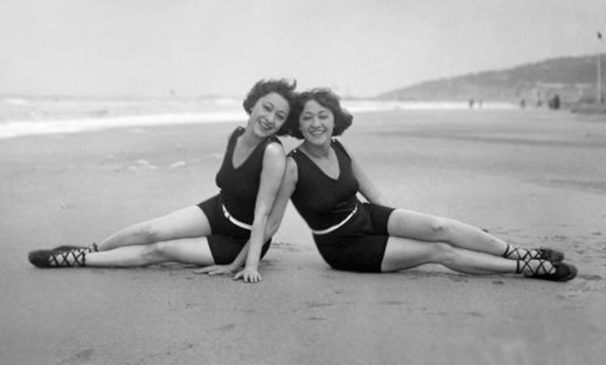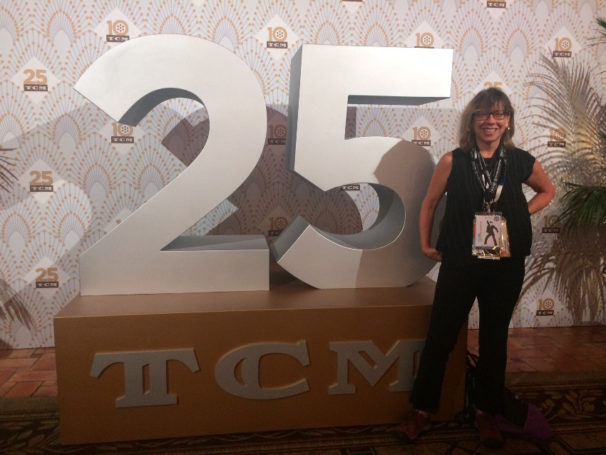
There was a happy feeling when hordes of classic film fans descended upon Hollywood Boulevard for the tenth year running to participate in the marvelous cultural juggernaut called TCM Fest 2019. Love for the channel, which celebrated its 25th birthday concurrent to this tenth film festival, was in the air. It wasn’t an identified theme, but in a film festival that opened with Harry meeting Sally once again, I did notice a lotta struggle between the sexes in the programmed content.
On the Festival’s final day, Sunday April 14, I could not help but notice that love was also on the screen. Three films I viewed depicted love stories … not the airy-fairy type but rather the difficult, painful grist of men and women working it out, or not. Struggling, grappling, pushing and pulling, negotiating, disappointing each other, and even separating. The films spanned a sizeable window of the twentieth century … from 1928 to ’45 … and each told its story primarily from a female perspective. Whether scribed by a woman or not (one was, the Garbo film, by Bess Meredyth); whether directed by a woman or not (one was, excellently, by Dorothy Arzner); whether or not starring woman — all three were, in order of viewing, Sylvia Sidney, Greta Garbo and Betty Grable.

The day began with Merrily We Go to Hell (1932) an unknown-to-me pre-Code marvel directed by Arzner and starring a luminescent Sylvia Sidney in a textbook analysis of why a woman should never, ever get married. Sidney, who bears a resemblance to the young Myrna Loy, plays an heiress who at the start of the film erupts in the most spontaneous of giggles. But falling in love with an alcoholic newspaper man (Frederic March) wipes the grin off her face. One must suspend disbelief that this gorgeous young thing wafting around in diaphanous pre-Code dresses would fall for such a irredeemable beast of a man. Film portrays a culturally accepted norm of heavy drinking just prior to Prohibition’s repeal before thinking people came to understand that the body simply cannot process that much alcohol poisoning. Disturbing.

Greta Garbo skulking her slender frame around the screen in her trademark slouch hat while her boyfriend-of-a-fancy-name, Neville Holderness (John Gilbert), pierces a hole in her heart with his intense brown eyes in A Woman of Affairs (1928), would be wonderful thing to watch under any circumstance.
But what if TCM arranged for historian Kevin Brownlow (who revived the movie in 2002, and who attended TCM Fest 2019 to be honored with the second annual Robert Osborne Award) to introduce the film together with Leonard Maltin? And then to have a new shimmering score for this beautiful late-silent MGM movie conducted its composer, Carl Davis, overseeing a 40-piece TCM Festival Orchestra in the pit of the Egyptian Theatre … what about that? And Leonard Maltin pointing out that John Gilbert’s great-great grandson was the orchestra’s French horn player? Well, what about that? That would be a trip to heaven, wouldn’t it, only I was already there, nestled in my favorite seat at the Egyptian (first row left balcony, second seat from the aisle … but please do not sit there).
I cannot recount all the suffering Garbo endures in “Affairs” before she finally figures out that she vants to be alone. It is estimable. She cannot marry her childhood sweetheart because her aristocratic father disapproves. Instead, she marries the wrong guy: he’s gay for one thing, and he’s in love with her brother (a foxy Douglas Fairbanks, Jr) for another. Once married, she finds he has a dysfunctional way of dealing with his issues — by flinging himself out a high-story window. Now a widow, Garbo gets to watch BFF John Gilbert marry a namby-pamby girl named Constance. Grrrr…. everything goes very badly (for Garbo) (spoiler alert) culminating in her meeting her fate in the form of a very solid tree in the way of her magnificent stretch limousine. Luckily, she dies clutching an ominous playing card, which doesn’t explain a single thing.

Betty Grable has a problem. First, her executive producer Darryl F. Zanuck pairs her in The Dolly Sisters (1945) with the somewhat cuter, slightly thinner June Haver. That means that Grable, with her unerring radar for show-biz upstaging, has to pump up the volume in order to dominate this Technicolor backstage melodrama about vaudeville’s favorite sister act you never heard of, the Hungarian-born Jenny and Rosie Dolly. As if that wasn’t enough, she has a guy in her life (John Payne) who wants her at home making goulash, spaetzle, schnitzel, streudel and little Hungarian-American babies. No career for you, sister! And don’t even think about that Paris tour!
Betty’s pretty hemmed in. Her movie is also exceedingly politically incorrect. It includes a “cosmetics” montage, with chorines garbed, ostensibly by Orry-Kelly, as tubes of lipstick and powder puffs. That’s nothing compared to dance director Seymour Felix’s cringe-worthy, by today’s standards, but otherwise splendid uptown-at-the-Cotton Club number, featuring white chorus girls painted over as cocoa-hued chorines. It’s so well done — it is also very unacceptable. With insane costumes by Orry-Kelly, working overtime on The Dolly Sisters!

artsmeme is very proud to have been one of an elite, knowing group of 15 journalists to have attended this Festival every year for a decade. All of our writing on TCM Fest, year by year, is archived here. Enjoy!

